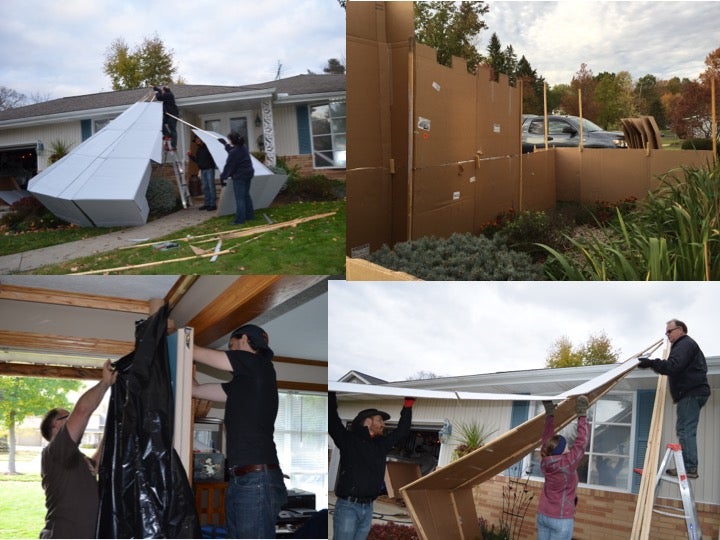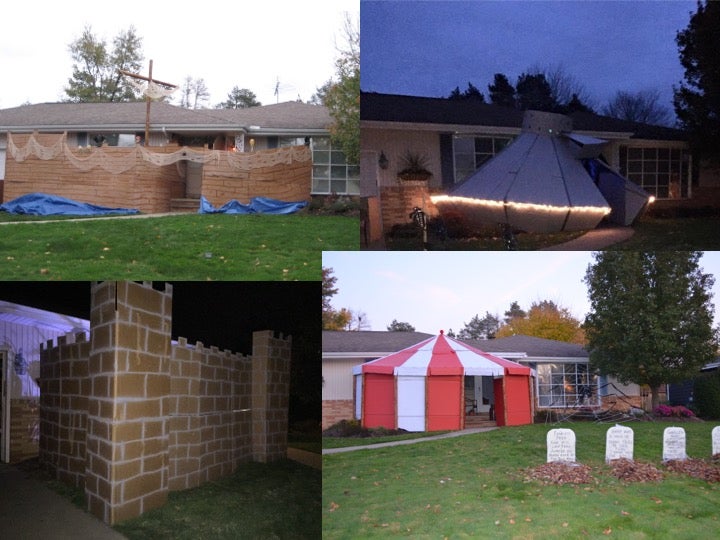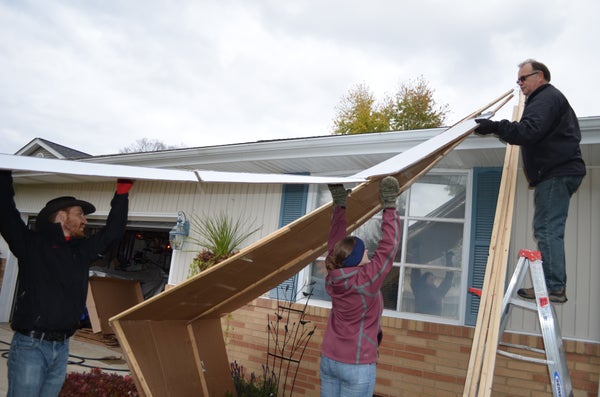This article was published in Scientific American’s former blog network and reflects the views of the author, not necessarily those of Scientific American
There seem to be some unspoken rules about the ages and ways it is appropriate to get excited about Halloween. When you are in grade school, enthusiasm can be relatively unbridled and can spread for weeks ahead of the holiday without really drawing attention. In late middle school and high school you are expected to pretend not to care, and then can care fanatically in the 12-72 hours before trick-or-treating when you and your friends decide to go out in coordinated costumes, but only, you know, like ironically. In college you are allowed to care about costumes in the context of parties you plan to attend, and as adults the person who can find the lowest-effort-to-highest-comic-payout ratio wins. Once you have kids of your own all self-respect is thrown out the window, because any excuse to dress babies in ridiculous costumes is its own reward. The arc is relatively accepted.
But what about when you don’t follow the arc? As with anything else, when your enthusiasm for something like Halloween falls notably above the curve, people will start trying to pull you back down. My family fell outside the arc. Way outside. And I couldn’t be more thankful.

Getting every piece measured, painted, and prepped in advance for rapid construction on Halloween night. Credit: Margie Schroeder
On supporting science journalism
If you're enjoying this article, consider supporting our award-winning journalism by subscribing. By purchasing a subscription you are helping to ensure the future of impactful stories about the discoveries and ideas shaping our world today.
Every Halloween kids would walk home from school past a perfectly boring suburban house. Sure there were some fake tombstones and a spider web, but that was standard Halloween fare. But by the time trick-or-treating would start, that same house would have a giant pirate ship in front of it. Or a UFO crashed into the lawn. Or a massive circus tent. Or a castle. There would be loud music, creepy fog, and going up to get candy often happened in nervous and giggly groups. And then by morning everything was gone. That was Halloween at my house.
Creating those kinds of extravagant sets took a lot of time and planning, especially when the entire construction phase had to be crammed into a couple of hours. That timeline added to the Halloween magic, but it also turned the process into an involved and rewarding design problem. It’s one thing to build a UFO out of cardboard, furring strips, screws, and paint. It’s another to have 2-3 hours to build it from scratch. The whole plan had to come together on paper – each piece had to be measured, cut, and painted in advance.
Our friends and neighbors used to wonder why we went through all the trouble. Were we really that into Halloween? But the task presented one of the most fun and challenging things we got to do all year.

Making magic in a few hours with cardboard, furring strips, screws, paint, and tape. Credit: Margie Schroeder
It didn’t matter that it took tons of measuring and angle calculations that would have put our high-school geometry homework to shame. We were actually going to get to build it. Checking the math and building scale models weren’t “effort.” They were the only way to be sure that we could get everything to work, because it had to work, on the first try.
And yes, every year had moments of tension. Every year something didn’t quite line up or wouldn’t quite stand. And there would be some frustration as the hours ticked by. But we would figure it out. And when the kids and their parents came and marveled at how crazy we were, we got to be proud of it together. That creepy entrance in the side of a giant ship, the one with the netting artfully draped across the hole that we couldn’t quite get rid of, the one that the neighbors were daring each other to walk through first – we had built that as a family. And all those people who shook their heads and called us crazy, they come back every year bringing their friends. Being proud of something others might be inclined to make fun of is easier with co-enthusiasts at your side.
And when my brother and I left for college, my parents carried on without us. As we did problem sets and labs they found ways to hold up giant walls with two sets of hands instead of four. We weren’t able to build elaborate structures outside of our dorm rooms, but our family Halloween followed us on campus in other ways. Knowing the value of measuring twice and cutting once – even metaphorical cuts – goes a long way in prepping for college-level labs. We both knew how to work within a deadline. We both knew the difference between designing for perfection and designing to meet the needs of an object's actual purpose. We knew what it was to put months of work into something and then let the public have their say. We had experience with creating plans, as well as knowing when to abandon those plans when circumstances changed. Nothing breeds resilience in problem solving quite like rain-soaked cardboard in high winds.

Transformation complete. Credit: Margie Schroeder
But more than anything, we were both willing to show enthusiasm for things that made us happy at levels way above the acceptable curve. That enthusiasm resulted in both of us road tripping back 6 hours with cars full of friends to share our crazy Halloween with them. That same kind of enthusiasm was necessary for my brother to convince his peers – on both sides – of the value of pursuing electrical engineering and philosophy. It’s what helped me explain why switching majors to add all of the requirements for a geology degree in the last two years of undergrad was not somehow wasting the work I had already done. My brother is now an assistant professor in California, where he is surrounded by colleagues whose level of enthusiasm perfectly matches his own sky-high arc. My last-minute pivot to geology led to a PhD.
My brother and I still try to get back to help with Halloween when we can, now with states between us and spouses added to the mix. But we are also excited because we will finally get the chance to try it on our own. When house shopping, both me in New York and my brother in California, we could not help sizing up front porches, sidewalks, entry ways, and available outlets for future Halloween potential. With photos and videos, we can all share our pride as packs of kids try to inch across the lawn without letting go of each other. There are six sets of hands, now spread across three states, but all of them are building with unabashed enthusiasm.
